I must admit that the Xiaomi Mi 11 made the best impression on me of all the smartphones of this manufacturer that I have had the opportunity to test so far. Not only because it is newer and therefore better than the older models. Xiaomi managed to refine and improve elements that were common to many predecessors, such as the MIUI system overlay, the camera app and its functions. The specification itself is top shelf, although the lack of a telephoto lens is immediately noticeable, which, for example, in the S21 Ultra is one of the most important elements promoted by the manufacturer. Xiaomi it has a one-of-a-kind macro camera. You can clearly see other priorities, but also a colossal price difference. There are many indications that Mi 11 has more in common than it shares with the top Samsung, and the price is clearly lower. So let’s take a closer look at what Xiaomi Mi 11 has to offer us.
Xiaomi Mi 11 Design
Xiaomi Mi 11 is a glass and metal construction. The screen is covered with Gorilla Glass Victus, the back is made of slightly matted Gorilla Glass 5, and the frame is metal. The dimensions of the Mi 11 are 164.3 x 74.6 x 8.1 mm, with a weight of 196 grams. A characteristic element of the construction are the camera lenses. Placed on three successively protruding islands, starting with the largest one, ending with the main lens which protrudes the most. It looks interesting – much better than the trunk layout in older models, but it causes the phone to wobble on flat surfaces and even the silicone case included in the set does not eliminate this effect.
Mi 11 is equipped with stereo speakers with full left and right channel separation. However, when we set the volume to the maximum, it can be seen that the right channel, i.e. the one at the bottom of the phone, is louder and has a fuller sound than the left channel, located at the top of the housing. The effect is much less noticeable at lower volume. The speakers are branded harman / kardon and are undoubtedly an incomparably better solution than a single mono speaker.
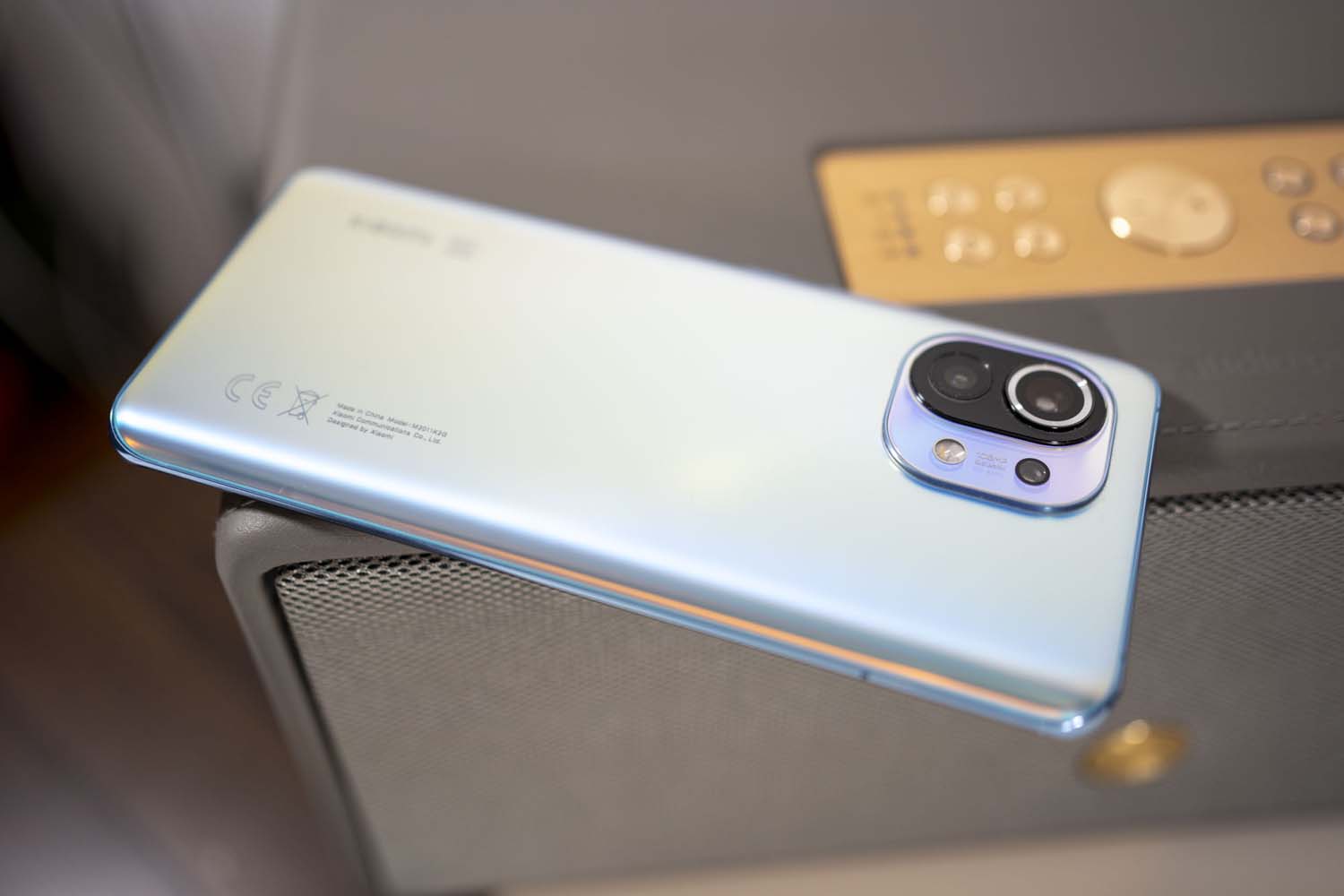
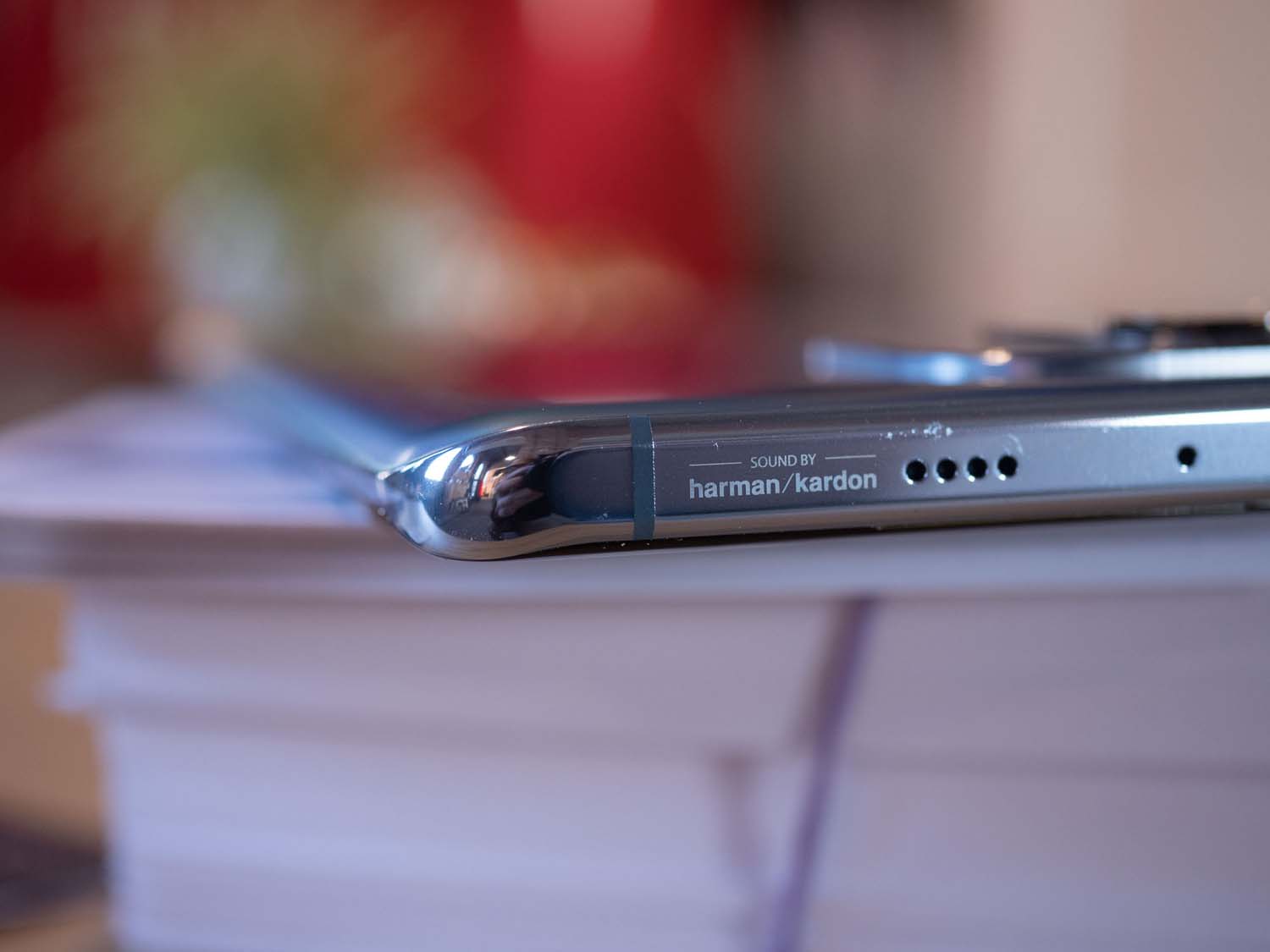
The fingerprint reader is in the screen and the unlocking process is accompanied by vibration feedback. You can feel and distinguish the process of scanning the fingerprint from confirming and unlocking the screen, which greatly simplifies the process and eliminates instances of putting your finger in the wrong place. It is an optical scanner and while it is quite fast, there are faster solutions on the market.
Xiaomi is one of the few manufacturers that does not provide official standards for housing sealing, and the same is the case with Mi 11 . On the SIM tray you can see a small element that can act as a seal, but it is not known how effective. This is basically the only significant oversight compared to most other high-end models. In addition, the workmanship is solid, although the test light blue would not be the color of the first choice in my case.
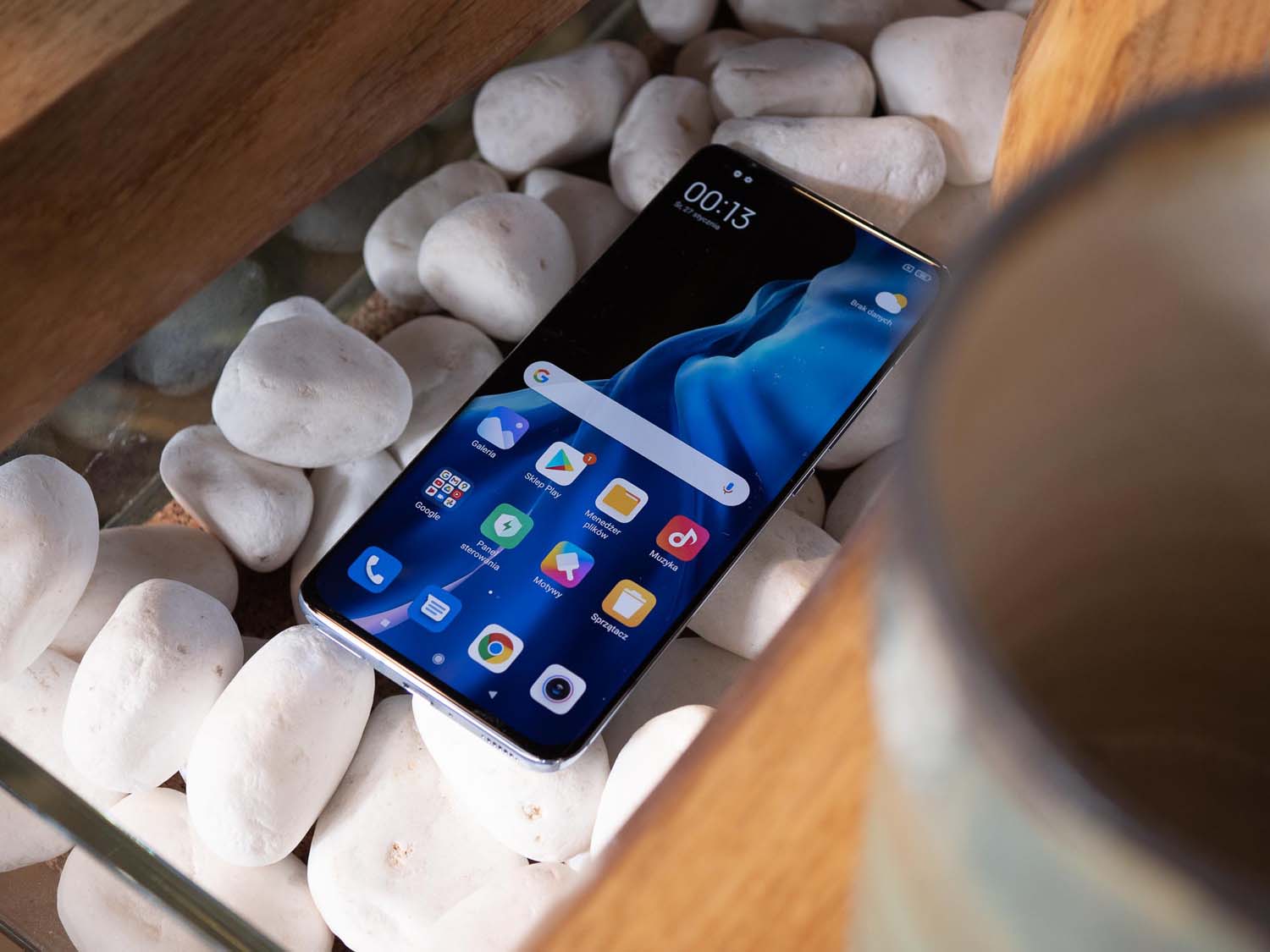
The display
The Xiaomi Mi 11 screen has a diagonal of 6.81 inches, a resolution of 3200 x 1440 pixels, an aspect ratio of 20: 9 and a pixel density of 515 PPI. The panel is made in AMOLED technology, it supports 120 Hz refreshing also in full resolution, and the maximum momentary brightness reaches up to 900 nits (1500 nits temporarily). In short, these are currently the best parameters available for a display used in a smartphone and are not inferior to even the Galaxy S21 Ultra .
The combination of AMOLED, high resolution WQHD + and 120 Hz gives a feeling of sensational smoothness and image quality. However, this is not the end, because the number of screen settings is really impressive. There are all the basic functions like dark mode, reading mode and flicker limitation. In the case of Mi 11 however, everything is customizable. There is a separate screen brightness setting for night mode. The reading mode, in addition to the classic, has an additional mode that imitates the appearance of paper. In the color scheme, you can choose between saturated, original and advanced settings, where we can additionally find the P3 color range, sRGB and the ability to adjust each component color separately, such as the ability to change the hue, saturation, contrast or gamma. Most of the users won’t even look here, but even the most demanding users will find everything they need here.

Even the AI image engine, i.e. automatic video enhancement, is divided into 4 separate functions: super resolution, AI image enhancement, AI HDR enhancement and MEMC, i.e. improved smoothness by adding intermediate frames. The user can only activate the options he cares about.
Not everyone can like the slight curvature of the screen at its edges and the rounding radius of the corners that does not connect with the vertical and horizontal edges. The lower and upper frames are also slightly different in width. Honestly speaking, I don’t notice it at all in everyday use, so I don’t mind it at all. You have to really look closely to see these details at all. I believe that the Mi 11 is not inferior to even the best display and offers many more options for image adjustment than the vast majority of smartphones on the market.
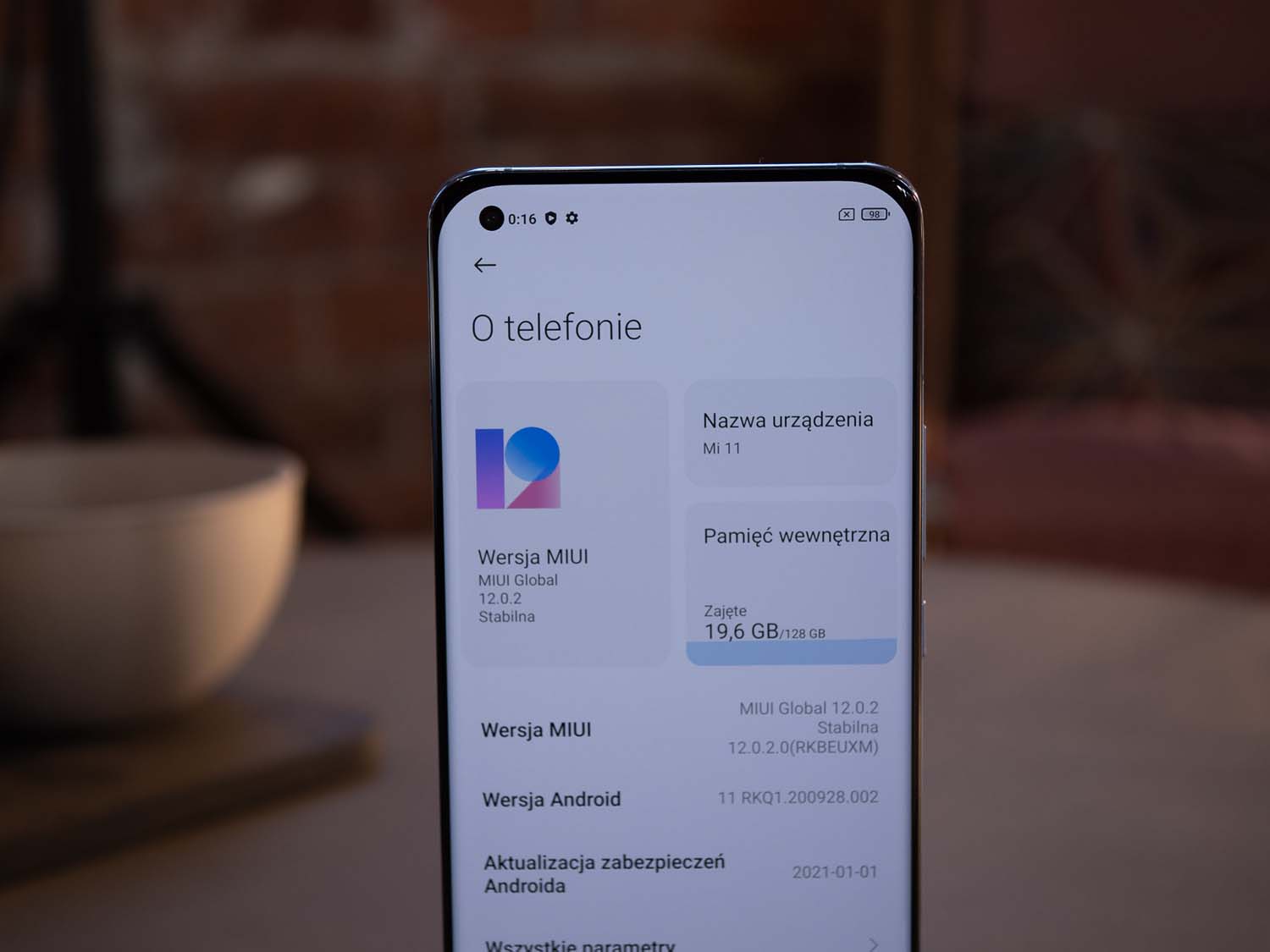
Specification and Operating System
Xiaomi Mi 11 has all the latest and greatest in the world of Android smartphones. The latest Snapdragon 888 processor clocked at 2.84 GHz + 3 x 2.42 GHz + 4 x 1.80 GHz is supported by 8 GB RAM LPDDR5 and two options of UFS 3.1 128 and 256 GB memory capacity. The model with 128 GB of built-in memory went to the editorial office. The smartphone supports dual SIM, but it is not possible to expand the memory with a microSD card.
As expected, the performance of the new Snapdragon is very good. The benchmarks were as follows:
- Antutu 8 – 703824
- Geekbench 5 – 1126/3621
- Androbench sequential read / write – 1445/731 MB / s
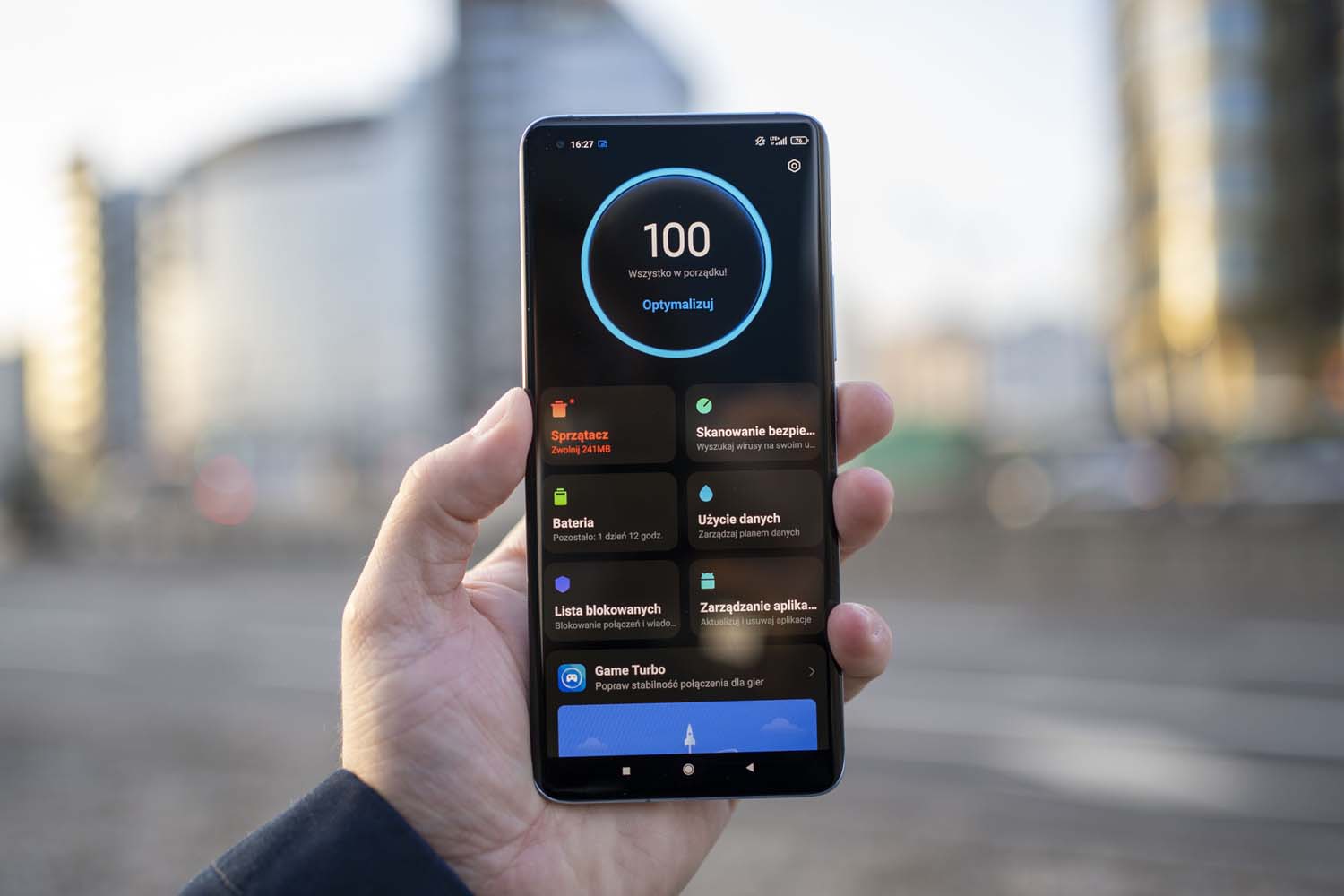
The combination of top performance and a screen with 120 Hz refresh gives a feeling of very smooth and efficient performance. I did not find any lost animation frames, and the applications start instantly. When under load, the phone heats up quickly and noticeably, but running the Antutu benchmark three times resulted in a 5% performance drop, so imperceptible. If anything, the noticeable heating of the housing may be a bigger obstacle for some people than potential throttling.
The connectivity package includes LTE, 5G, WiFi ax, Bluetooth 5.2, NFC, there is even an infrared port. Localization is accomplished using GPS, Galileo, GLONASS and Beidou. The sensor kit includes: accelerometer, gyroscope, proximity sensor, light intensity sensor and digital compass.
The equipment set is complete and meets the latest standards. Not only is there nothing missing, but we also get an infrared diode that allows you to use the smartphone as a remote control.
The biggest advancement for the Mi 11 however, it concerns software. But let’s start from the beginning. The smartphone works under the control of Android 11 with security updated on January 1, 2021. The appearance of the system is modified by the MIUI 12.0.2 overlay (the final planned version is 12.5 – it will be available in Q2 2021) and here you can see the biggest difference compared to the older flagships. Older versions of the MIUI overlay could not be denied a multitude of functions, but in my opinion the aesthetics remained a lot to be desired, as did the organization of everything into a logical whole. The improvement over what was before is very noticeable. In my opinion, MIUI caught up with the best in terms of overlay design. It works smoothly, is readable and pleasing to the eye. This is one of those elements that were missing before to be said to be Xiaomifully belongs to the premium segment.
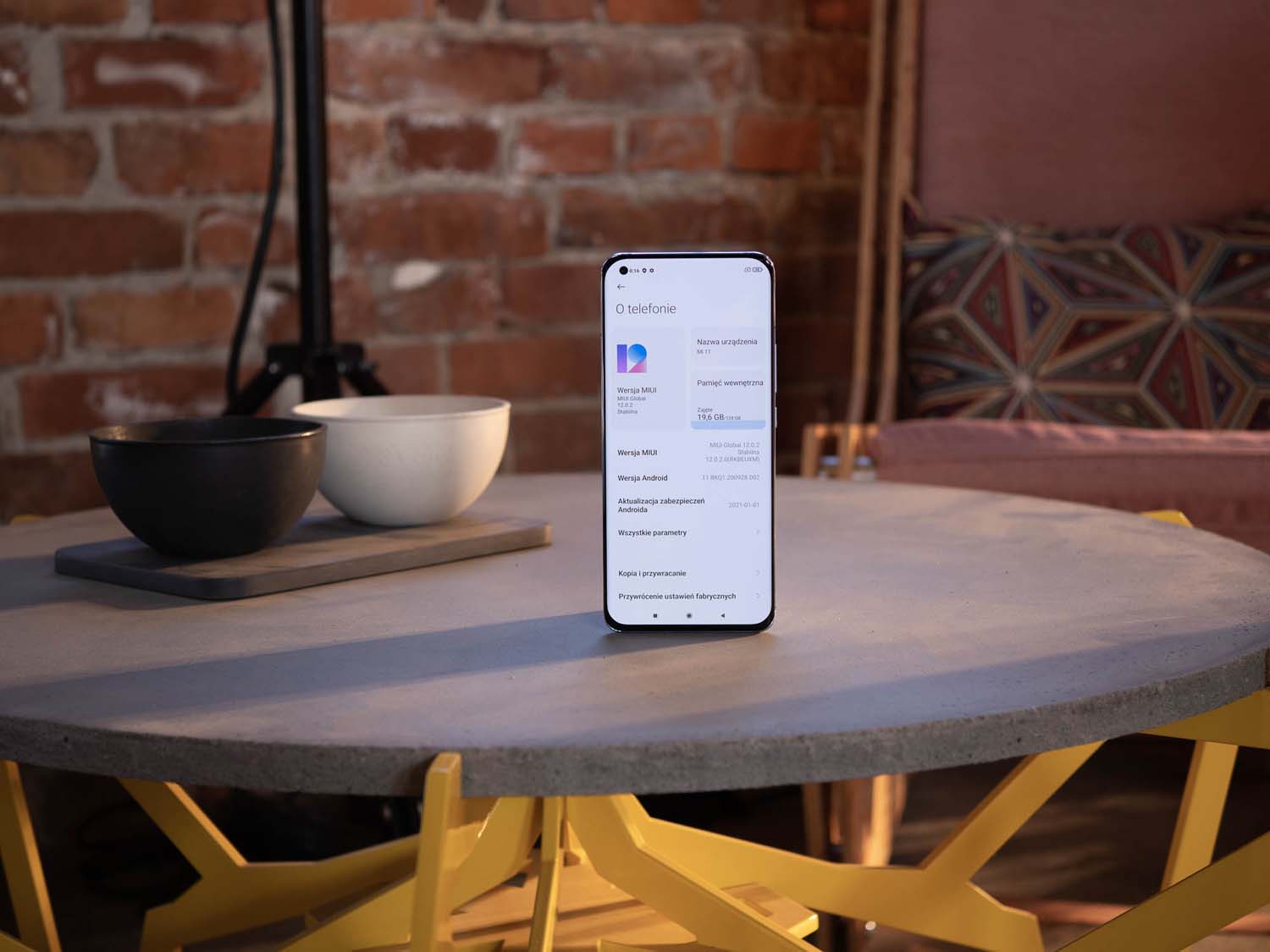
The system also includes well-implemented additional functions. You can make a snapshot of the screenshot with the three-finger gesture. The flashlight can be activated by pressing the power button twice. There is even a gesture of adjusting the screen brightness without going to the settings or unfolding the upper bar – you can do it by touching the screen dice and sliding your finger horizontally. It is also possible to configure your own shortcuts. We also find unusual features such as emitting a sound to help remove dust from the speaker.
The system has a Game Turbo function, the ability to expand a floating window directly from the notification by dragging it, a second space, as well as a lite mode with larger icons and text. In short, there are many possibilities to adapt a smartphone to your needs and these are things that are useful in everyday use.
The only strange behavior I noticed during the tests is the screen that does not turn off while talking to headphones connected via Bluetooth. The screen faded after the time specified in the settings and when it was about to turn off, it again increased the brightness to full value.
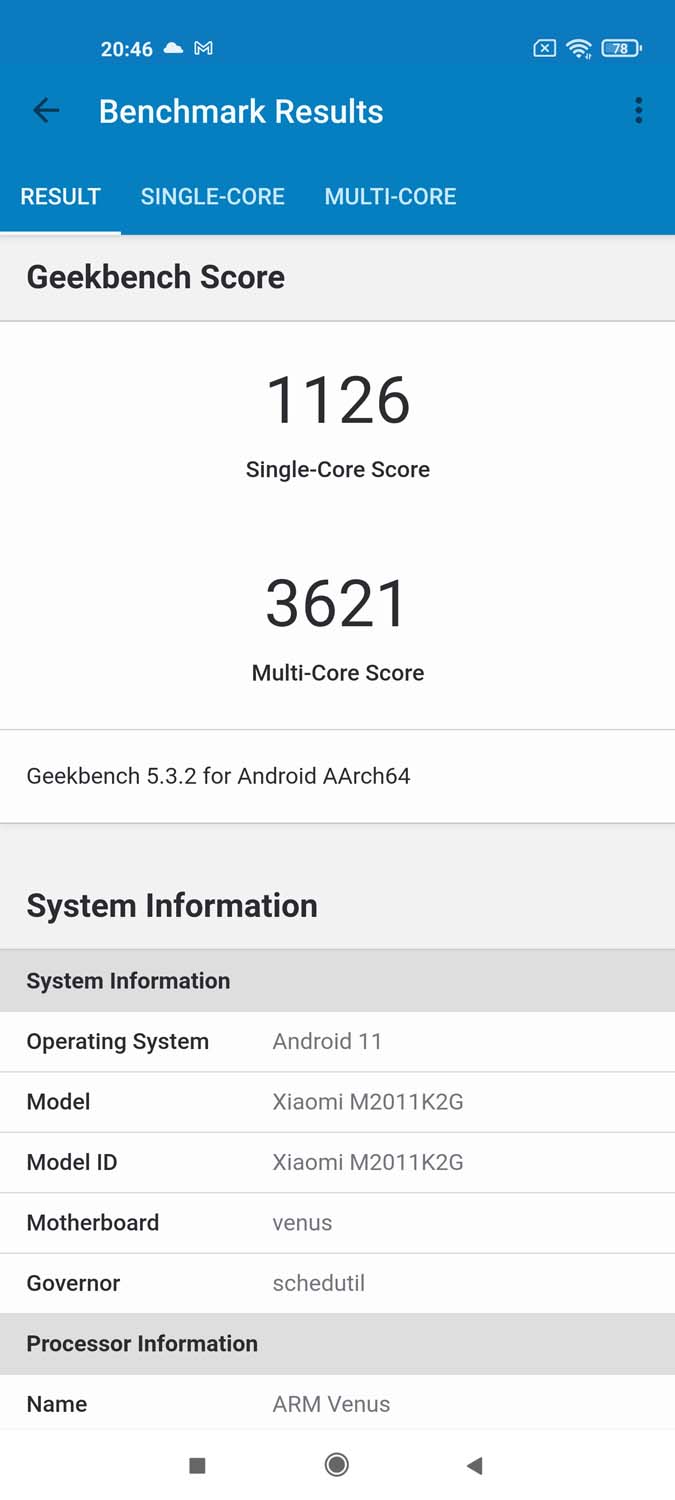

Camera
Xiaomi Mi 11 has 3 cameras on the back and a selfie camera:
- 108 MP, f / 1.85, 26mm, PDAF, OIS – main camera
- 13 MP, f / 2.4, 123˚ – wide-angle camera
- 5 MP, f/2.4 – aparat do makro
- 20 MP, f/2.2, 27mm – aparat do selfie
Here you can see the first significant shortcoming – Xiaomi resigned from the telephoto lens and we do not have any optical magnification beyond the standard camera. The only method of zooming in is framing from the main matrix, i.e. digital zoom. At the same time, other manufacturers are competing for a greater optical zoom and in the latest Galaxy S21 Ultra for the first time a periscope lens offers 10x optical zoom.
The camera app offers AI-assist, HDR mode, and color filters. There are photo, video, pro, portrait, night, 108m, short video, panorama, document, video blog, slow motion, time lapse, dual video, movie effect, long exposure and super moon modes.
The pro mode deserves praise, in which all settings and all three lenses are available, even the macro one. In addition, in the settings you can find focus peaking, zebra and a method of measuring light, so rare options. The list of modes is long and some items contain a number of additional options. The movie effect offers 5: magic zoom, slow shutter, time freeze, night time lapse video and parallel world. On the other hand, the long exhibition offers: moving crowd, neon trails, oil painting, light painting, starry sky and star trails. All modes are well described. Some of them offer effects that you could achieve on your own with manual settings. However, the automatic modes are easier to use. However, there are effects that cannot be achieved without a dedicated mode offered by the camera Mi 11 . You can see that the modes were not added hastily and forcefully, because they are refined. The vertigo effect, i.e. a combination of magnifying the image while moving away from the object, so that the object itself remains the same size in the frame center, and only the perspective behind it changes, is really nice and without a dedicated mode, making this effect on a smartphone is very difficult. My only reservations concern the naming – the vertigo or dolly zoom effect is called here a magic zoom, zebra is the verification of the shutter speed, and focus peaking are the focus points.

In any camera, the most important thing is quality, not the number of functions. When it comes to the main camera, the photos from it are of very good quality. The matrix has a good tonal range, and even if we shoot against the sun with reflections on a wet surface, the tonal transitions are smooth and without artifacts. The detail is also very good. Night photos do not disappoint. They may not necessarily compete with the greatest champions in this category, but Mi 11 also has nothing to be ashamed of. Optical stabilization is definitely helpful in this case.
Pictures from the wide-angle camera fulfill their function. Wide frames allow you to take pictures that would not be possible otherwise. The effects are decent, but you can find smartphones on the market that take better wide-angle photos.
The biggest surprise is the macro camera, which, unlike 99% of smartphones on the market, in this case offers surprisingly good results. Magnification is much larger than that of the main camera, and in the case of viewing the effects on the smartphone screen or on social networks, there is no significant drop in quality compared to the main camera. Until now, such magnifications required a camera with interchangeable optics and a special macro lens. Even if we do not use this camera too often, it is a really useful function.

Selfie photos offer good sharpness and detail, and although the front camera does not have autofocus, the depth of field is so large that it is not difficult to take a sharp photo.
Mi 11 allows you to record video in 8K resolution. Recordings are smooth and have no problems with sharpness, but they work best when moving the camera slowly. There are special modes for more effective digital stabilization, but they are reserved for 1080p recordings. Nevertheless, some form of stabilization functions in each mode. In 4K recordings, it is impossible to switch the camera from wide-angle to the main one – you can choose which camera you use and after starting the recording, use the digital zoom. However, in 1080p recordings, smooth switching between cameras is available. I rate the overall quality of the video and stabilization as very good, although some combinations of available functions in certain modes are strange.
It is worth mentioning the film effects, which are nicely realized and give the possibility of creative variety of shots. They can be useful when collecting material for editing a longer film.
Sample pictures:
How long does the battery last? – 5th grade
Xiaomi Mi 11 has a battery with a capacity of 4600 mAh. The smartphone supports 55W cable charging, 50W wireless charging and 10W reverse charging. I could not check wireless charging. However, charging with the included charger is very fast. By recharging from scratch, the smartphone achieved the following results:
- 17% after 5 minutes
- 35% after 10 minutes
- 48% after 15 minutes
- 61% after 20 minutes
- 73% after 25 minutes
- 83% after 30 minutes
- 100% after 45 minutes
Instead of charging your smartphone overnight, you can recharge it when visiting a cafe. The only downside of the charger is its large size and weight – the charger itself weighs 111 grams, and with the cable 145 grams – that’s as much as a second smartphone.
When I used Mi 11 on the highest resolution of the WQHD + screen with a 120 Hz refresh, the battery lasted for the whole day and 2/3 on the second day, but I had to recharge the phone before the evening. When streaming YouTube video with screen brightness set to half, but also with 120 Hz and maximum resolution, the operating time was around 13 – 14 hours. These are not record results, but I think that by giving up the 120Hz refresh, you can improve them a bit.
Our final assessment
Xiaomi Mi 11 is a smartphone worthy of being called a flagship. It has a screen with the best available parameters, the fastest processor available, super fast charging, both wired and wireless. Moreover, it now has a very nice and functional MIUI 12 overlay, which in my opinion holds the One UI level from Samsung. It is difficult to have any reservations here.
It is much more difficult to evaluate the camera of this smartphone. He is very good, but not necessarily the best. It also has a specific set of features and functions. On the one hand, 8K video recording, a very extensive pro mode, or a lot of additional refined photo and video modes make it stand out, as does an exceptionally good macro camera, unrivaled from other devices. At the same time, there is no telephoto lens, and the digital zoom will never match the optical quality, even when framed from a 108 megapixel matrix. The last controversial element is the lack of an official standard for housing sealing.
Finally, the most important thing is price. The smartphone is almost half cheaper than the Samsung S21 Ultra, offering a screen with the same parameters and a better processor than Exynos. Again, the difference comes down to the camera only. Xiaomi Mi 11 is also cheaper than Mi 10, which was a less successful smartphone at the time of its launch.
Who is Xiaomi Mi 11 for :
- For those looking for the best screen
- For those looking for the highest performance
- For people who appreciate super-fast charging
- For those looking for the cheapest flagship
Who is Xiaomi Mi 11 not for :
- Not for people who need a sealed housing
- Not for people using a telephoto lens
Advantages of Xiaomi Mi 11 :
- Snapdragon 888 top performance
- The latest 5G connectivity technologies, WiFi ax and Bluetooth 5.2
- Stereo speakers
- Top screen parameters – AMOLED 120 Hz in 3200 x 1440 pixels
- MIUI 12 is a completely new chapter in the appearance and operation of the system on Xiaomi phones
- Lots of useful and practical additional functions in the system
- Good quality photos and videos
- An unrivaled and genuinely useful macro camera
- 55W wired charging and 50W wireless charging + reverse charging
- Comfortable battery life
- A more attractive price than in the case of Mi 10, and the phone is more successful
Disadvantages of Xiaomi Mi 11 :
- No certified housing seal
- Protruding lenses – the phone is rocking on the table even with a silicone case
- The top / left speakers are a bit quieter in stereo than the right
- No telephoto lens

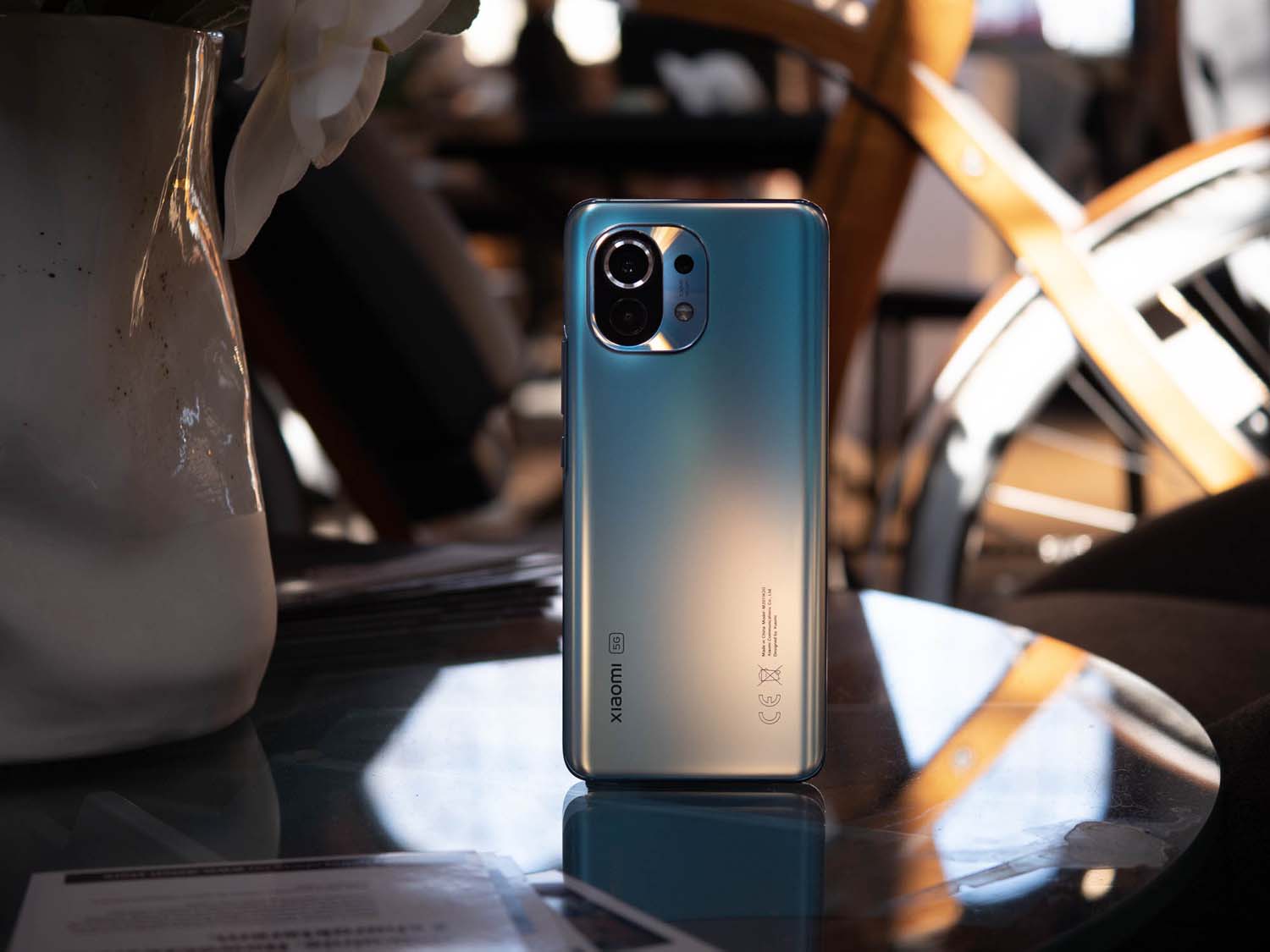

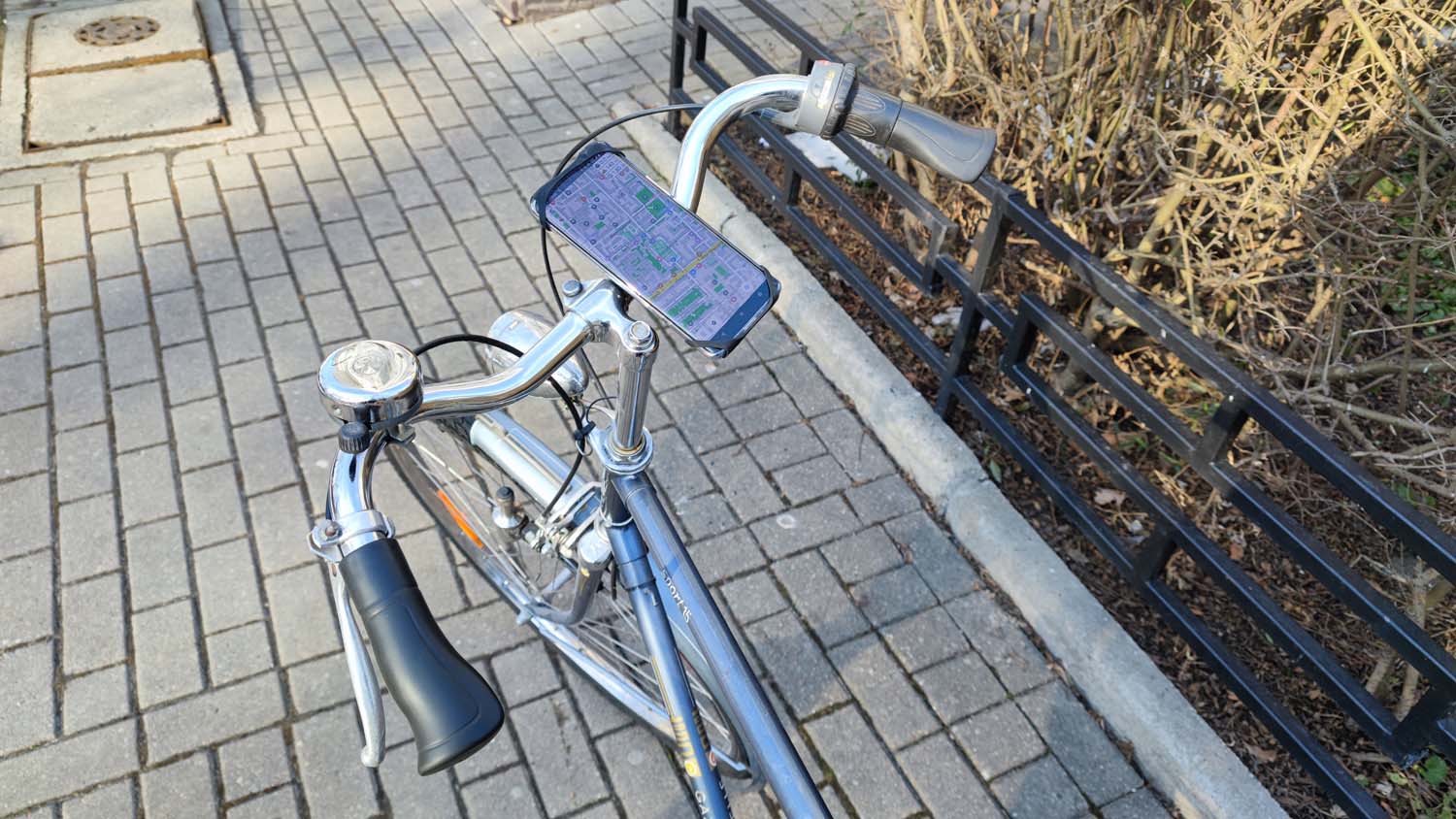



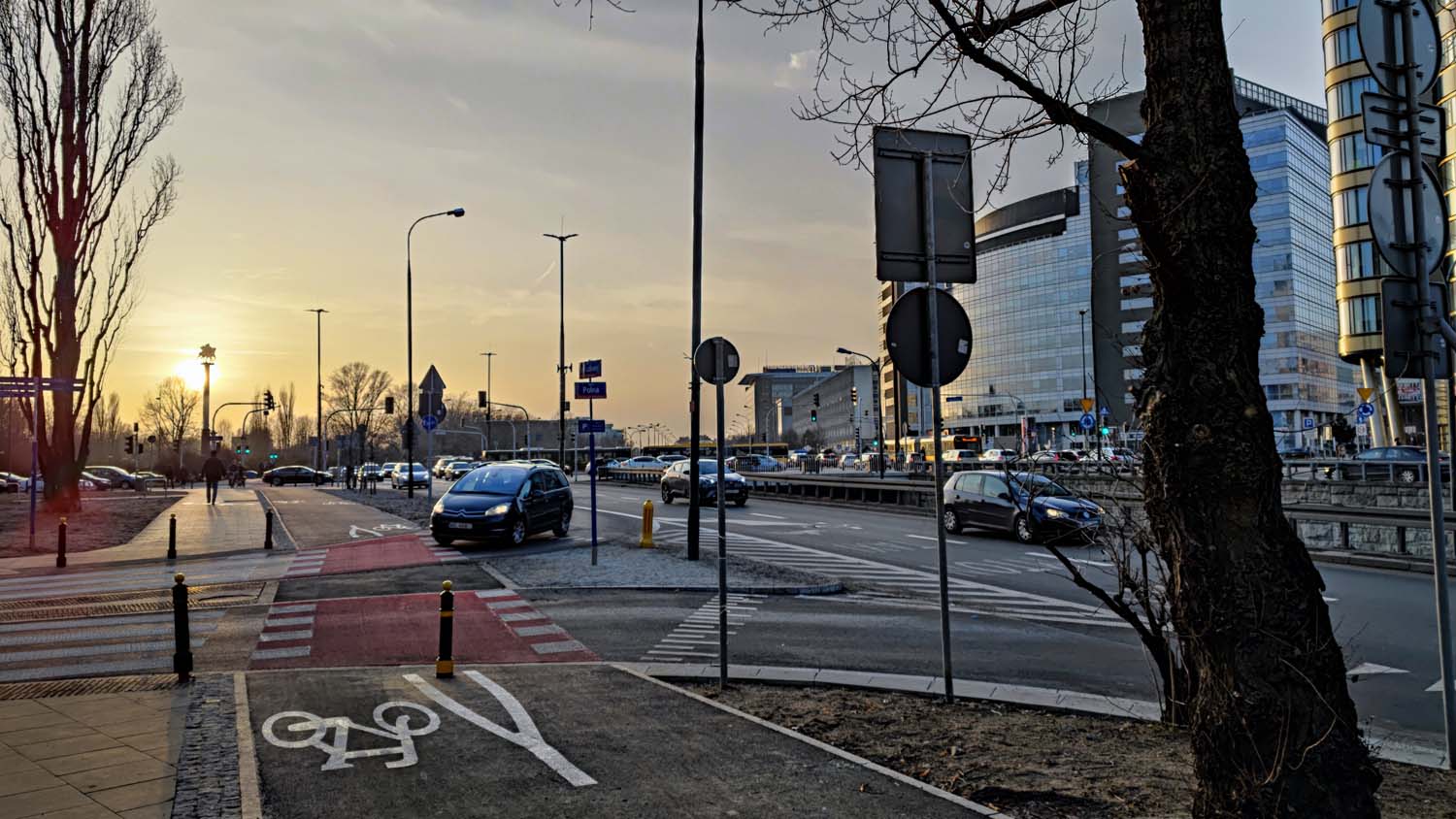








Add Comment